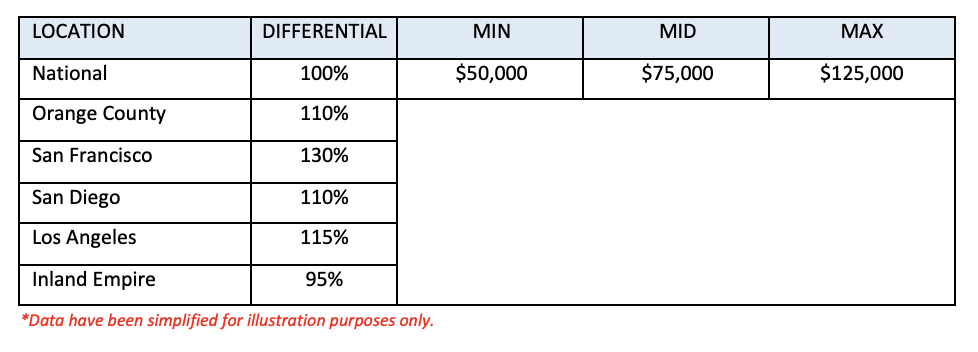Geographic Pay Differentials: Practices in Managing Pay Between Locations
For companies operating in different states, an effective compensation planning strategy includes comparison of relevant labor markets for pay differentials based on geographic locations of the work. Geographic differentials are market-driven pay variations between locations. One of the most important overall planning strategies is to create equitable compensation across labor markets for the entire workforce. There could be far-reaching budget implications if compensation planning does not account for the appropriate deviations in relevant labor markets. The objective is to control costs where it is not necessary to pay at higher levels or to ensure adequate pay in areas where the market is much higher than the national average. Creating and adopting the use of geographic pay differentials may be needed to recognize recruitment and retention difficulties.
The standard for decisions about implementing geographic pay differentials is the degree to which there are verifiable differences in competitive salary levels across labor markets. The location of the role or incumbent has an impact on determining base pay levels. Geographic differentials enable organizations to attract and retain talent in premium markets, manage labor costs in non-premium markets, and facilitate perceptions of equitable pay. However, it may add complexity in pay management if there are multiple geographic locations involved.
How to Calculate Geographic Pay Differentials
Base pay is driven by location as pay reflects the cost of labor of the local market. Geographic differentials may be applied for specific cities, or cities with similar differentials may be grouped into geographic tiers. While market pricing jobs by city is considered a best practice for assigning locations to geographic pay differentials, it is not always practical or possible to use market data by city. As an alternative, companies create geographic pay differentials using a particular region or by grouping locations with similar market rates.
Organizations need to consider whether or not this approach aligns with the overall compensation philosophy and talent strategy. Local pay structures create a layer of complexity but, in general, ease administration and manager discretion. As employees move between locations, their pay rates are adjusted to reflect their new location’s range. To manage pay structures, companies will need to determine how often they will review differential data to adjust ranges and pay inequities, annually at minimum. In addition, they will need to consider HRIS implications for changing and maintaining multiple pay structures.
Example:
The company has its headquarters located in Orange County with offices/branches in the cities indicated in the table below. Each office posts a position for an Accountant. Using salary survey data and geographic locators, the following observations have been made:

From the data, separate base salary structures are created by grouping together similar markets based on differentials. This is then used to determine appropriate, fair, and equitable salaries for candidates in each location.

If the labor supply is short in some areas, jobs will reflect that. As noted earlier, regular review of the salary structures and jobs is necessary to maintain competitive wage ranges when the workforce is spread across cities, states, or the country. The compensation strategy should reflect where the company wants to pay in relation to what the market (and the competition for talent) is paying for jobs in each location. The illustration provided is based on creating structures for jobs that are recruited in the local area. Higher level jobs (i.e., executives, directors, and senior managers) typically are sourced nationally and require consideration of other factors, such as industry, annual revenue, and number of employees. These factors will vary by job.
SalaryExpert’s Geographic Assessor makes it easy to calculate geographic cost of labor differentials. Use the geographic wage differential data to set branch office salary structures, calculate adjustments for cost of living differences, and more. Visit SalaryExpert to learn more about how to design geographic salary differentials and how to properly set pay in different locations.
